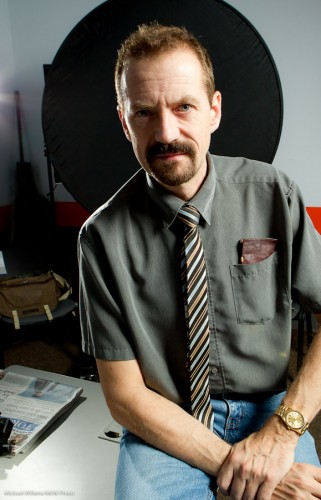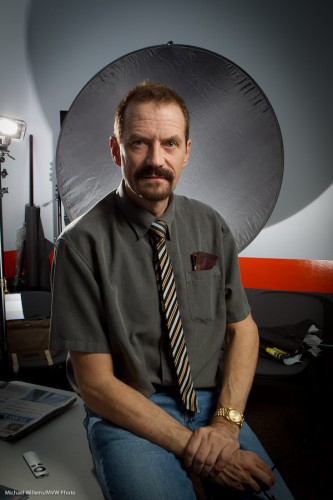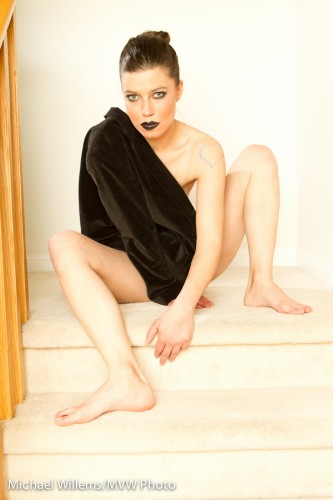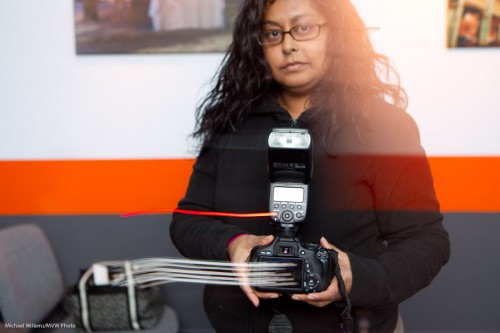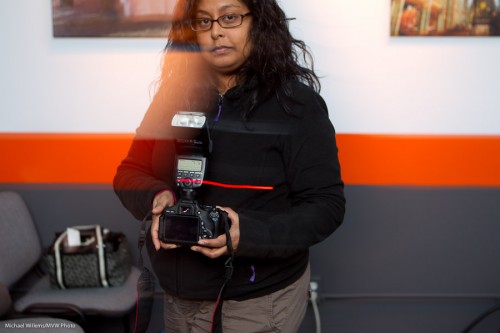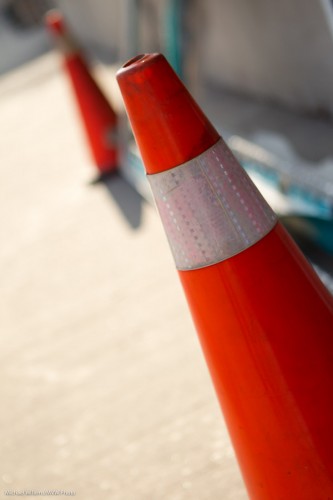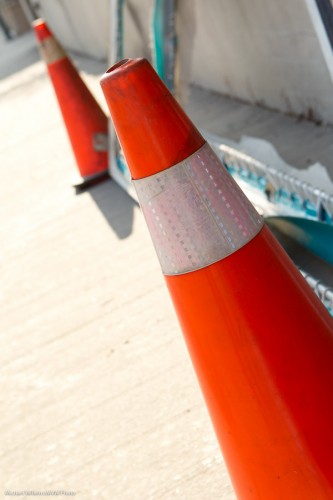Often, a portrait can be made much more lively by adding some rim lighting. Edge lighting, like this:
That was during a class I taught the other night. The main light was a speedlight in an umbrella, on our right. The rim light was a speedlight behind me on our left, fitted with a grid, so the light would not spill everywhere.
As you see, this light edge adds a lot of liveliness to the picture. Simple and very effective.
You can see the gridded rim light better in this photo (with a third light added that shines onto the background):
Simple – I used speedlights with TTL control. (“Master/Slave”, as Canon calls it). I encourage everyone to learn how to use this – adding off-camera flashes often makes your images much, much better.
Another variant is the hair light, as in this image here:
Here, the rear flash has no grid: it lights up the background and also shines on the hair, lending it that shampoo-ad type “healthy looking hair” feel.

